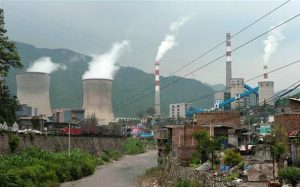A plunge in the price for oil has prompted predictions that investment in renewable energy will be scaled back, but how will this impact China, which last year added more capacity in low-carbon energy than any other country?
The last time prices fell to a comparable degree was in the 1980s, after the OPEC price increases of the 1970s. These price increases had triggered a search for alternatives to oil. The shift to natural gas began in earnest, as well as scaling up of solar and wind power in Japan, in US states such as California, and in parts of Europe.
But as OPEC countries raised their output in the 1980s, and with demand holding steady in the West, oil prices started to drop – and continued dropping.
Large renewable energy programs like the Sunshine Programme in Japan and the wind program in California were scaled back, then dismantled. Even if oil was not primarily a substitute fuel for electric power generation, its influence on other fossil fuels’ pricing meant that oil came to be viewed as being in direct competition with renewables.
As the price of oil fell, its utilisation as an energy source rose, and resort to renewables declined. The solar panels were removed from the White House roof.
Fast forward thirty years. Once again, renewable energy suppliers are taking a battering, as oil prices plunge.
Tesla’s share price has dipped to be 28 percent down on its peak in September last year (while still trading at a premium for the year). Vestas, the Danish wind power company, saw its share price plunge as oil prices fell, but then recover to be down by just 8 percent over the past six months. Yingli has fared worse, with its share price falling 70 percent over the course of the past year.
If history were to repeat itself, this could be the beginning of the end for these renewable energy companies, and for many more following in their wake.
But this time around things may turn out differently. Why?
The difference is China.
At this moment China is the world’s largest investor in renewables.
By 2014, China had created generating capacity from water, wind and solar sources of 378 GW – as compared with 172 GW for the US, 84 GW for Germany, and 71 GW for India. China’s investments have held up even as oil prices have been falling. And as China continues to invest, so the market for renewables continues to hold.
The reason that China is continuing to invest in renewables even in the face of falling oil prices is that its renewables strategy is not based solely on the price of fossil fuels. China demonstrably has other goals in mind when investing in renewables.
The most immediate of these alternative goals is to clear the smog-laden air in China’s cities. The situation in centers such as Beijing or Tianjin is so bad that policy has to redirect investment away from fossil fuels (particularly coal but also oil) no matter what the price of oil.
Another powerful factor is China’s concern to enhance its energy security, through resort to renewables. Chinese leaders well understand that as their reliance on imports of fossil fuels rises (oil, coal and gas) so their vulnerability to geopolitical shifts becomes more pronounced.
China’s dependence on Iran, on Nigeria, on the Sudan and on Venezuela as sources for oil imports has been increasing, and so the likelihood of its being exposed to war, revolution or terror rises as well – just like any other fossil fuel-dependent country.
But renewables offer decisive advantages, as their costs of production fall to become comparable to (or even cheaper than) traditional fossil fuels. Renewables offer the advantage that they provide energy generation devices that are independent of resource flows and resource prices (such as the price of oil) because they are based on manufacturing. Manufacturing can be done anywhere. And manufacturing is something of a Chinese specialty.
So from China’s perspective, the shift to building vast new electric power generating capacity based on renewable sources from water, wind and the sun, is founded on strategic calculations that go well beyond the price of oil.
Renewables costs fall
The shift to renewables is predicated on costs, yes – but the relevant comparison is the falling costs of renewables, enabling generators to produce power at costs comparable to or lower than utilising fossil fuels. Falling spot prices for oil do not impinge on these comparisons.
In fact China’s electric power generating system has been based on coal much more than on oil, so it is the world price of coal that has been of greater relevance. And over the past six months coal prices have also been falling, by nearly as much as those of oil. And yet China has held steady to its programme of building renewables generating capacity – notwithstanding these reductions in coal prices.
So here is a prediction. Whether the world price of oil – and coal – continues to fall (or rise), China’s commitment to renewables will remain – because the commitment to renewables is based on strategic calculations of cleaning the air and enhancing energy security, that have little or nothing to do with fossil fuel prices. And as China maintains its demand for renewables, so the world market for renewables is likely to hold.
This article originally appeared on energypost.eu
John Mathews’ new book “The Greening of Capitalism: How Asia is Driving the Next Great Transformation”, is now available from Amazon.







